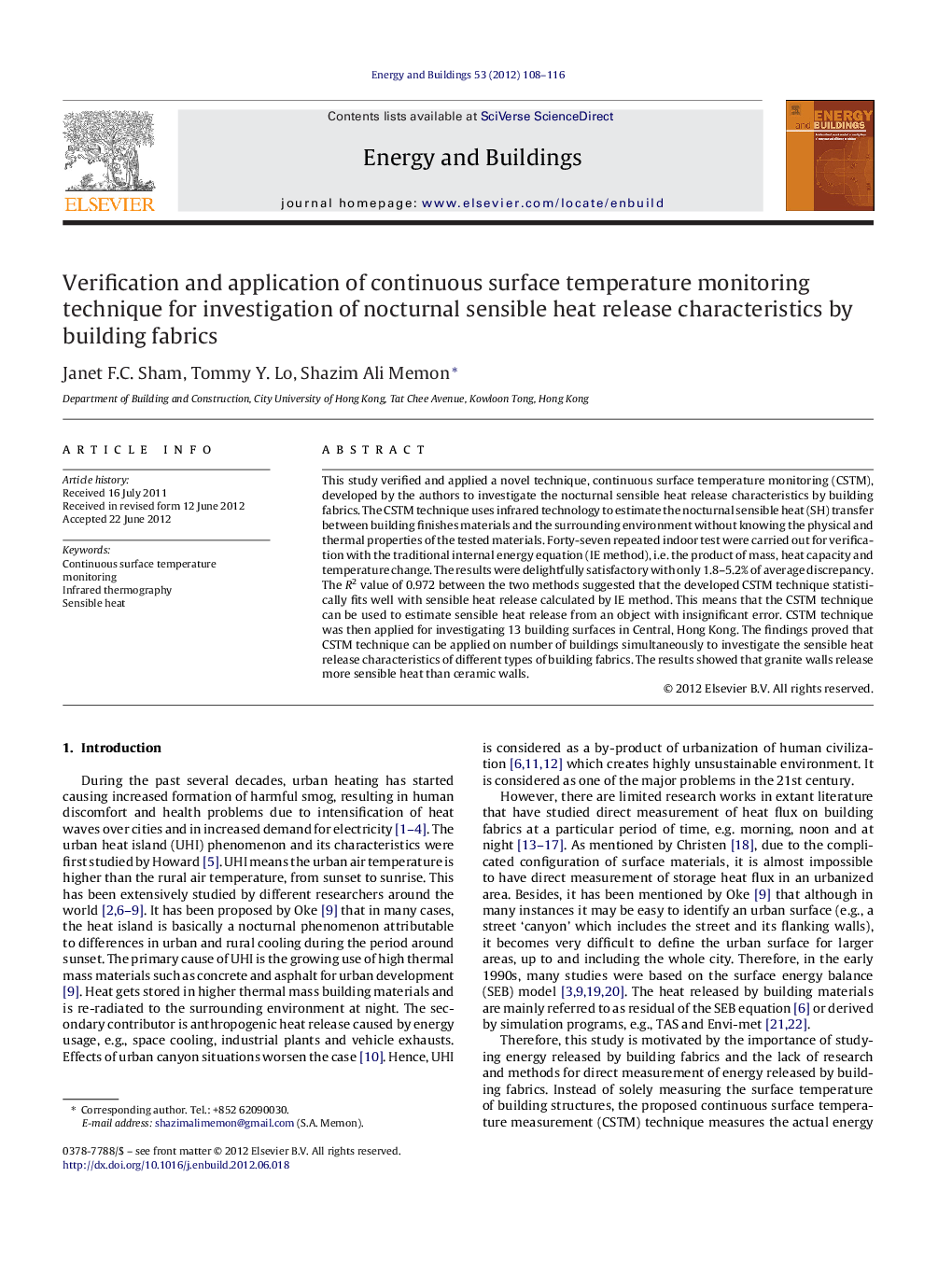| Article ID | Journal | Published Year | Pages | File Type |
|---|---|---|---|---|
| 263701 | Energy and Buildings | 2012 | 9 Pages |
This study verified and applied a novel technique, continuous surface temperature monitoring (CSTM), developed by the authors to investigate the nocturnal sensible heat release characteristics by building fabrics. The CSTM technique uses infrared technology to estimate the nocturnal sensible heat (SH) transfer between building finishes materials and the surrounding environment without knowing the physical and thermal properties of the tested materials. Forty-seven repeated indoor test were carried out for verification with the traditional internal energy equation (IE method), i.e. the product of mass, heat capacity and temperature change. The results were delightfully satisfactory with only 1.8–5.2% of average discrepancy. The R2 value of 0.972 between the two methods suggested that the developed CSTM technique statistically fits well with sensible heat release calculated by IE method. This means that the CSTM technique can be used to estimate sensible heat release from an object with insignificant error. CSTM technique was then applied for investigating 13 building surfaces in Central, Hong Kong. The findings proved that CSTM technique can be applied on number of buildings simultaneously to investigate the sensible heat release characteristics of different types of building fabrics. The results showed that granite walls release more sensible heat than ceramic walls.
► This study verified and applied a novel technique developed by the authors. ► It is used to investigate the sensible heat release characteristics by buildings. ► The results are satisfactory with only 1.8–5.2% of error. ► The results also show that granite walls release more energy than ceramic walls.
